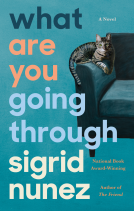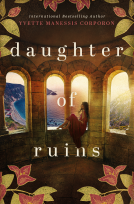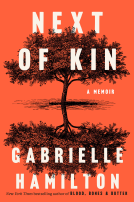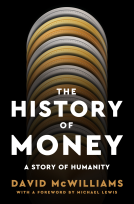
Almanack, The
by Martine Bailey
This title was previously available on NetGalley and is now archived.
Send NetGalley books directly to your Kindle or Kindle app
1
To read on a Kindle or Kindle app, please add kindle@netgalley.com as an approved email address to receive files in your Amazon account. Click here for step-by-step instructions.
2
Also find your Kindle email address within your Amazon account, and enter it here.
Pub Date May 01 2019 | Archive Date Apr 01 2019
Talking about this book? Use #TheAlmanack #NetGalley. More hashtag tips!
Description
1752, Midsummer. Following a desperate summons from her mother, Tabitha Hart departs London for her home village of Netherlea – only to discover that her mother has drowned. Determined to discover the truth about the Widow Hart’s death, Tabitha consults her almanack and uncovers a series of cryptic notes describing her mother’s terror of someone she names only as ‘D’.
Teaming up with young writer Nat Starling, Tabitha begins a race against time to unmask ‘D’ before more deaths follow. But as the summer draws to a close and the snow sets in, cutting off Netherlea from the outside world, Tabitha and Nat are forced to face the darkest hours of their lives. With the year predicted to meet a ‘violent, bloody end’’ will Tabitha survive long enough to bring her mother’s killer to justice?
Available Editions
| EDITION | Other Format |
| ISBN | 9780727888631 |
| PRICE | $28.99 (USD) |
| PAGES | 304 |
Average rating from 29 members
Featured Reviews
 Sandra D, Reviewer
Sandra D, Reviewer
In 1751, eleven days were lost as Britain aligned with the Gregorian calendar and this is the year in which Martine Bailey sets her third novel, ‘The Almanack’. An original mixture of historical mystery, detective novel and romance, it has time as its theme throughout. The passing of time and the fixedness of the past, the slippery unpredictability of the future, and the way our choices made today can impact on the time to come.
Tabitha Hart is travelling north from London, home to a village near Chester, summoned by a plea from her mother. On route she is robbed and arrives at Netherlea in shredded clothing to find her mother recently drowned. Tabitha left Netherlea in disgrace and her return is not welcomed by village gossips and officials but she refuses to ignore worries about the nature of her mother’s death. Consulting her mother’s ‘Vox Stellarum’, the Chester almanack, she discovers handwritten notes outlining her fears of someone called ‘D’. A childhood friend now village constable, widower Joshua Saxton, offers solid, reliable support as Tabitha struggles to stay in the village, caring for Bess, the baby daughter she left behind with her mother. It is clear Joshua is fond of Tabitha but she does not return his affections; awkwardness complicated when she meets Nat Starling, lodger at Eglantine Hall, a writer of ‘penny oracles, horoscopes and dream lore.’ Tabitha starts to make connections between her mother’s suspicions and the predictions in the printed almanac, written by De Angelo. Could this be the ‘D’ who threatened her mother? But there are many people in the village with the initial ‘D’. Who can she trust?
Almanacks, or printed yearbooks, not only contained a calendar, festival dates, seasonal notes, sunrise and sunset times, planetary alignments, historical facts and other country lore but also riddles, predictions and horoscopes. Exactly the sort of thing hack Nat Starling writes to scratch a living. The theme of time breathes in every chapter, together with the lost eleven days in 1751 that confused the established seasonal calendar. Although the past cannot be changed, memories of the past may vary between people and written records can be amended to tell a different version of the truth. Lies told in the past may in the future be deemed historical fact. And so Starling thinks on the river of time: ‘If he was standing here in the now, then to the left, downriver, the past was disappearing away into the night. Time past could never be changed: what was done was done. If only the past did not stay fixed like dead flies in amber. If only he could live his life again.’
A thoroughly enjoyable historical mystery, there is so much detail in this book it will repay reading. I did not fully engage with the riddles – one precedes each chapter – based on original riddles, with the answers written at the back of the book. Bailey manages the twists and turns of the plot, efficiently hiding the identity of ‘D’ until I finally guessed correctly just before the end. This is Bailey’s third novel and another brilliant read, evidence of her mastery of her period and intricate plotting.
Read more of my book reviews at http://www.sandradanby.com/book-reviews-a-z/
The Almanack is a unique 1750's historical mystery set in England. I really a noted the riders and the characters. I will have to read this author's other books.
 kATHLEEN G, Reviewer
kATHLEEN G, Reviewer
Perfect for fans of complex historical mysteries! Set in Georgian England, this is the twisty tale of Tabitha, who is searching for the murderer of her mother in the village of Netherlea. Who is the D who frightened her mother? Tabitha is not one to be easily put down- she lived an, ahem, lively life in London until she was robbed and she always comes out on top. She joins up with Nat Sterling, a writer, to try to find D but things get worse in Netherlea before they get better. This unique mystery is framed by an Almanack-which I've not seen before in a novel- which only adds to the entertainment value of the read. Thanks to Netgalley for the ARC. This is fun!
Saturated with beautiful images of the natural world in mid-18th century rural England, Bailey’s third mystery evokes a time when people regulated their lives according to the change of seasons and were fascinated by mechanisms, scientific and not, used to predict future events. It takes place during a pivotal period rarely seen in fiction: the adoption of the Gregorian calendar in 1752, when eleven days were “lost.”
A young woman named Tabitha Hart is robbed by her latest bedmate while traveling from London to her home village of Netherlea at her ailing mother’s request. Alas, she arrives too late: the Widow Hart lies cold in her bed, presumably having drowned in the river. Although she is shamed for her loose behavior, and for leaving behind an infant girl for her mother to raise, Tabitha is well-educated, and she takes up her mother’s former post as village searcher. She also picks up her mother’s favorite Almanack, and the scribbled marginalia in the little book, along with a threatening note, convinces Tabitha she was murdered. Nat Starling, a poet newly arrived in town, helps Tabitha in her search to avenge her mother’s death, and the main clue is the purported killer’s initial, “D.” Although at first Tabitha suspects Nat is “all verse and no purse”—one of many fun expressions—she soon grows as beguiled by him as he is by her. Meanwhile, some dire predictions in the Almanack appear to be coming true.
Adding to the intellectual puzzle, each chapter begins with a riddle from the era (the answers can be found at the end). The writing has an authentic period richness, and while the mystery unfolds slowly, there are moments of fast-paced excitement and several real surprises on the way to the big reveal.
From the moment Tabitha wakes at an inn on her journey to Netherlea, finding that she has been robbed by her companion for the night, left with nothing other than the underclothes she’s wearing and a purloined watch shaped as a silver skull, this wonderful book drew me into its vividly created world and refused to let me go until the very last page. It’s 1752, an era of social change but still largely ruled by superstition and the changing seasons – and a year rather more unsettled than many by the fact that eleven days are due to be “lost” by the synchronisation of the calendars.
And it’s the calendars of the time that provide the framework for the story, each chapter following the structure of the almanack by which people plan and live their lives, each chapter opening with a riddle to solve (you’ll be pleased to hear solutions are provided!), astronomical notes and an enigmatic prediction. And it works exceptionally well, the fairly short chapters taking the suspense filled story inexorably forward, the tension steadily building, the secrets revealed.
When I reviewed the author’s earlier books, I mentioned her exceptional ability to recreate the writing style of the time: it never makes the reading difficult or inaccessible, but gives her characters a distinctive and authentic “voice”, despite the fact that the book is written in the third person. Add to that the obvious depth of her research, her love for her subject, and the way the book appeals to the full range of your senses – well, it’s really quite a heady and intoxicating mix.
But it’s also quite a story, and incredibly well told. Tabitha might be an unlikely heroine, returning home from her life of debauchery in London, to find her mother dead, apparently drowned. You might not take to her at that first encounter – I know I didn’t – but by the book’s end I’d entirely taken her to my heart. While dealing with her bereavement and concealing her family secrets, she takes on her mother’s role as “searcher” (I found this simply fascinating…), laying out the dead and recording the cause in the Book of Mortalities. And she then begins to investigate her mother’s death – with the support of the besotted Nat Starling, another quite wonderful character – and it takes them into a world of threat and danger every bit as terrifying and gripping as that of a modern psychological thriller.
While you’ll grow to love both flawed characters at the book’s centre, there’s also a large cast of supporting characters for you to get your teeth into – every one perfectly drawn, every one three dimensional, the villains and the good, and those whose true character might lie somewhere between the two. There’s tension and mystery, darkness, a wider superstitious and celestial dimension, a romance, some lovely touches of humour – and it all moves at a perfect pace, making you read another chapter, then maybe just one more, until you decide to read to the end because you can’t bear to put it down.
I was totally enchanted by this book – a compulsive read that I think so many readers would enjoy, regardless of any preconceptions about historical fiction. Highly recommended to all – and a definite contender for my books of the year list.
(Review copied to Amazon, but link not yet available)
Readers who liked this book also liked:
Yvette Manessis Corporon
General Fiction (Adult), Historical Fiction, Women's Fiction
Marie Bostwick
Historical Fiction, Literary Fiction, Women's Fiction


















